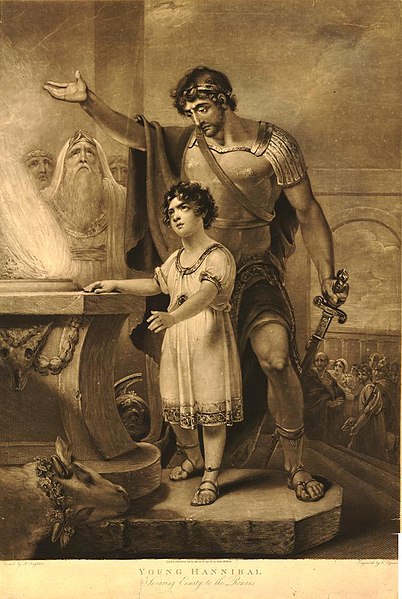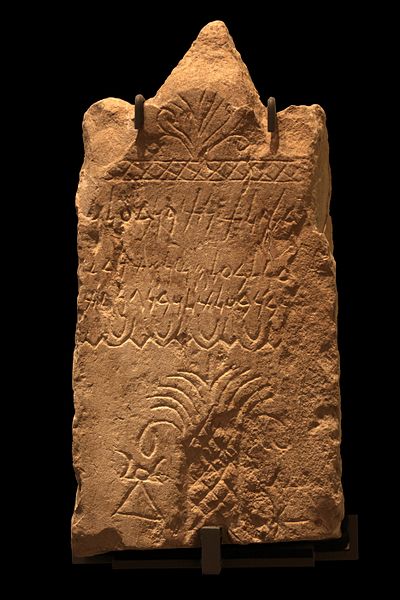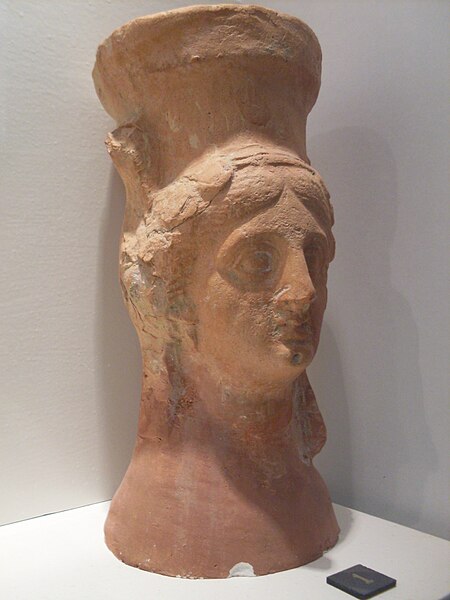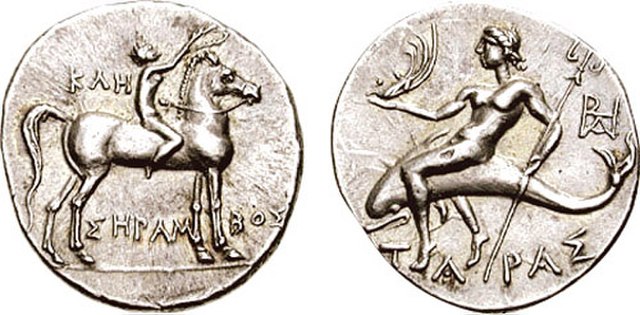Hamilcar Barca or Barcas was a Carthaginian general and statesman, leader of the Barcid family, and father of Hannibal, Hasdrubal and Mago. He was also father-in-law to Hasdrubal the Fair.
A Carthaginian shekel dated to the Mercenary War, circa 241-238 BC, from an uncertain mint in North Africa; the head of Heracles is shown on the obverse, wearing the Nemean lion skin, while a standing lion is featured on the reverse.
Carthaginian Armor of the Ksour Essef 3rd century BC
Young Hannibal Swearing Enmity to the Romans
Statue of the Carthaginian general Hannibal, Hamilcar's oldest son
Ancient Carthage was an ancient Semitic civilisation based in North Africa. Initially a settlement in present-day Tunisia, it later became a city-state and then an empire. Founded by the Phoenicians in the ninth century BC, Carthage reached its height in the fourth century BC as one of the largest metropoleis in the world. It was the centre of the Carthaginian Empire, a major power led by the Punic people who dominated the ancient western and central Mediterranean Sea. Following the Punic Wars, Carthage was destroyed by the Romans in 146 BC, who later rebuilt the city lavishly.
Stele with a Phoenician votive inscription, palm motif, and sign of Tanit, from the Carthage tophet, now in the Museum of Fine Arts, Lyon
The suicide of Queen Dido, by Claude-Augustin Cayot (1667–1722)
A Carthaginian ceramic perfume burner in the shape of a woman's head, Kerkouane Archaeological Museum
Coin from Tarentum, in southern Italy, during the occupation by Hannibal (c. 212–209 BC). ΚΛΗ above, ΣΗΡΑΜ/ΒΟΣ below, nude youth on horseback right, placing a laurel wreath on his horse's head; ΤΑΡΑΣ, Taras riding dolphin left, holding trident in right hand, aphlaston in his left hand.








